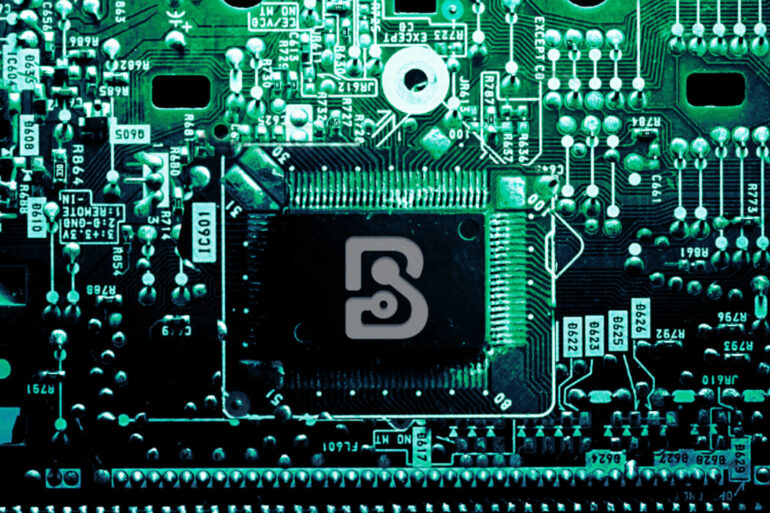The explosive growth of generative AI is blowing up preconceived notions of what it means to build technology innovations. Not only do the fulsome computing needs of AI and machine learning extend well beyond current semiconductor capacity, but existing workarounds are both incredibly expensive and require significant energy to run.
The good news is this is a massive opportunity for Canadian innovators—but only if industry perceptions change. Speaking with BetaKit, Niraj Mathur, co-founder of Blumind, shared his experience building a deep-tech company in Canada and why he feels the semiconductor industry is due for an all-out revolution.
“Silicon is the great leveller.”
Most conversations about AI vacillate between its incredible potential to change everything and its fairly significant risks. But Mathur said there’s a more mundane issue at hand: energy consumption.“If AI growth continues at the rate it has been for the last eight-odd years, it’s going to consume almost all the energy generated by humanity today within 30 years,” said Mathur. “It’s just an unfathomable amount of energy.”
This is the problem Mathur hopes to solve. He and the team at Blumind are building a new type of semiconductor chip that is not only physically smaller, enabling AI and machine learning in smaller devices (think AR headsets), but also significantly more energy efficient. To do this, the company is designing new silicon architecture, which Mathur claimed lowers a neural network’s power needs by 100 to 1,000 times compared to what’s currently available on the market. And prototyping is going “beautifully, beyond our expectations.”
“One guiding principle that we have in our industry is the proof is always in the silicon,” Mathur said. “And that’s because silicon is the great leveller. If you have a great idea, if you have simulations, if you have great concepts, that’s all well and good. But it comes down to ‘hey, you got to put it in a chip and show it works.’”
Hardware needs long-game support
Mathur noted that there isn’t much competition in the market right now for the new silicon architecture Blumind is building: large companies are working to repurpose existing products to lower energy profiles and other AI innovators are focused on what AI can do rather than how it’s powered.
Mathur knows the competition will come; the power needs of AI are too great to be ignored for long. But a bigger issue for Blumind might be getting the support it needs to grow. He compared the Canadian semiconductor industry, which had previously fallen out of favour and only recently received renewed government support, to that of SaaS, which features consistent investment and industry support.
“Silicon is the great leveller. If you have a great idea, if you have simulations, if you have great concepts, that’s all well and good. But it comes down to ‘hey, you got to put it in a chip and show it works.’”
This is where programs like ventureLAB’s Hardware Catalyst Initiative come in, offering an accelerator-style program for semiconductor startups. Blumind was one of the inaugural companies in the program and Mathur said it was “phenomenal” that ventureLAB brought together two key supports every hardware company needs: lab facilities and a network of the right people.
“We’ve used the facilities here extensively to characterize and validate our silicon,” said Mathur. “I’m not aware of any other incubator, not only in Canada but anywhere in the world, that has this kind of support for semiconductor companies.”
On top of physical resources, Mathur said the network ventureLAB brought together for companies in the program was essential. He explained that hardware companies have different business models, timelines, revenue strategies, and capital needs compared to the average SaaS businesses. And more to the point, the people who deeply understand those differences are few and far between in North America—but Mathur said ventureLAB was able to bring them together.
“Getting the folks, the ecosystem partners, the advisors in their orbit to support our type of company was phenomenal,” said Mathur.
Mathur acknowledged that the program isn’t for everyone, and advises founders to have more than a “science project” ready before applying. He added that while the timeline to develop actual solutions is long, founders should have at least some market interest from both would-be customers and investors.
“Incubators are great for providing support in all those areas,” said Mathur. “But it’s important as an entrepreneur you have some of those fundamentals sorted out in your head and have some third-party validations to go with it.”
Beware of too much gray hair
While Mathur is excited about the future of Blumind and the opportunity to add to Canada’s semiconductor industry, he’s nervous about one thing: aging. Specifically, he’s noticed that the industry is “graying at a very fast pace.”
His explanation for this issue–despite the fact that the semiconductor industry offers great pay and growth opportunities–is that career interest had fallen out of favour in the past 15 years as software became sexy. Now, however, there is not only massive economic potential but also support to build hardware companies—and Mathur said young people need to see this potential and choose to enter the industry. If they don’t, Canada’s economy will face greater talent crunches and a crippling technology deficit in the near future.
“I hope especially our youth recognize this because I’d like to see more students selecting semiconductor design courses and electronics engineering courses and choosing this career path,” said Mathur.


